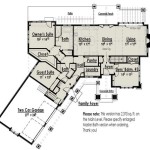Best Way to Paint a Concrete Basement Floor
Painting a concrete basement floor is a cost-effective way to enhance its appearance, protect it from moisture and wear, and make the space more comfortable. While seemingly straightforward, achieving a durable and visually appealing finish requires careful preparation, the right materials, and proper application techniques. This article outlines the optimal method for painting a concrete basement floor, ensuring a long-lasting and attractive result.
Key Point 1: Thorough Preparation is Paramount
The foundation of a successful concrete floor painting project lies in meticulous preparation. This stage involves cleaning, repairing, and profiling the concrete surface to ensure optimal paint adhesion. Neglecting these steps can lead to premature paint failure, peeling, and unsightly results.
Testing for Moisture: Before any other preparation steps, it is crucial to assess the moisture level within the concrete slab. Excessive moisture can prevent paint from properly adhering and lead to blistering and peeling. A simple plastic sheet test can provide a preliminary indication of moisture presence. Tape a 1-foot square of clear plastic sheeting to the floor with duct tape, sealing all edges. After 24-48 hours, check for condensation beneath the plastic. If moisture is present, address the source of the moisture intrusion before proceeding with painting. This might involve improving drainage around the foundation, repairing cracks, or installing a dehumidifier.
Cleaning the Concrete: A clean surface is essential for good paint adhesion. Begin by removing any loose debris, dirt, dust, and existing coatings using a broom, vacuum, and scraper. For stubborn stains and grime, use a concrete cleaner or degreaser specifically designed for this purpose. Follow the manufacturer’s instructions carefully, ensuring proper dilution and rinsing. Pressure washing can be effective for removing ingrained dirt, but it is important to allow the concrete to dry completely before moving on to the next stage.
Repairing Cracks and Imperfections: Any cracks, chips, or holes in the concrete surface must be repaired before painting. Use a concrete patching compound specifically formulated for repairing concrete floors. Clean the area around the crack or imperfection, apply the patching compound according to the manufacturer’s instructions, and allow it to cure completely. Once cured, sand the patched area smooth to blend with the surrounding concrete surface. For larger cracks or structural issues, it is advisable to consult with a professional concrete contractor.
Etching the Concrete: Concrete surfaces are naturally smooth and porous, which can hinder paint adhesion. Etching the concrete creates a profile that allows the paint to grip the surface effectively. This can be achieved chemically using muriatic acid (hydrochloric acid) or mechanically using a concrete grinder. When using muriatic acid, follow safety precautions, including wearing appropriate personal protective equipment (PPE) such as gloves, eye protection, and a respirator. Dilute the acid according to the manufacturer's instructions, apply it to the concrete surface, and scrub with a stiff brush. After etching, thoroughly rinse the concrete with water and allow it to dry completely. Mechanical etching with a concrete grinder provides a more consistent and controlled profile, but it requires specialized equipment and experience. Regardless of the method used, the goal is to achieve a surface similar in texture to medium-grit sandpaper.
Final Cleaning: After etching and repairing, perform a final cleaning of the concrete surface to remove any remaining dust or debris. Vacuum the floor thoroughly and wipe it down with a damp cloth or mop. Ensure the concrete is completely dry before proceeding with the painting process.
Key Point 2: Selecting the Right Paint and Primer
The type of paint and primer used on a concrete basement floor significantly impacts the durability, appearance, and longevity of the finished result. Choosing the appropriate products based on the specific needs and conditions of the basement is crucial.
Primer Selection: A high-quality concrete primer is essential for promoting paint adhesion and sealing the concrete surface. Primers penetrate the concrete pores, creating a strong bond between the paint and the substrate. Consider using a moisture-resistant primer if moisture is a concern in the basement. Epoxy primers are known for their excellent adhesion and durability, while acrylic primers are a more cost-effective option. Follow the manufacturer’s instructions for application, ensuring even coverage. Allow the primer to dry completely before applying the paint.
Paint Options: Several types of paint are suitable for concrete basement floors, each with its own advantages and disadvantages. Epoxy paint is renowned for its exceptional durability, chemical resistance, and ability to withstand heavy traffic. It is ideal for garages, workshops, and other areas subject to wear and tear. Acrylic latex paint is a more affordable and environmentally friendly option that provides good adhesion and moisture resistance. It is suitable for general-purpose basement floors. Concrete stain penetrates the concrete surface, creating a translucent color that enhances the natural texture of the concrete. It is a good option for those who prefer a more natural look. Polyurethane coatings offer excellent abrasion resistance, chemical resistance, and UV resistance. They are often used as a topcoat over epoxy or acrylic paint to provide added protection.
Considerations for Selection: When choosing a paint, consider the following factors: anticipated traffic levels, exposure to moisture, chemical resistance requirements, desired aesthetic appearance, and budget. For high-traffic areas or areas prone to spills, epoxy paint or a polyurethane coating is recommended. For general-purpose basement floors, acrylic latex paint may be sufficient. Choose a paint color that complements the overall design of the basement and enhances its brightness. Light colors can help to make a basement feel more open and airy. Purchase enough paint to apply two coats, ensuring adequate coverage and durability.
Key Point 3: Proper Application Techniques and Curing
Even with thorough preparation and the right materials, improper application can compromise the final result. Following best practices for applying paint and ensuring proper curing are vital for achieving a durable and long-lasting finish.
Application Tools: Use high-quality brushes, rollers, and paint trays designed for use with concrete paints. A roller with a nap length appropriate for the texture of the concrete surface will ensure even coverage. Use a brush to apply paint in corners, edges, and other areas that are difficult to reach with a roller. Consider using a paint sprayer for large areas, as it can provide a faster and more even application. However, sprayers require more skill and preparation to avoid overspray and uneven coverage.
Painting Process: Begin by applying the primer according to the manufacturer’s instructions. Ensure even coverage, paying particular attention to edges and corners. Allow the primer to dry completely before applying the first coat of paint. Apply the paint in thin, even coats, avoiding drips and runs. Overlapping each stroke slightly will ensure full coverage. Allow the first coat of paint to dry completely before applying the second coat. Follow the manufacturer’s recommended drying times. The second coat will provide added durability and color consistency.
Curing: Curing is the process of allowing the paint to harden and reach its full strength and durability. Follow the manufacturer’s instructions for curing times, which can vary depending on the type of paint used. Avoid walking on the painted surface during the curing period. Protect the painted surface from dust, dirt, and moisture. Maintain a consistent temperature and humidity level in the basement during the curing process. A dehumidifier can help to control humidity levels. Do not place heavy objects or furniture on the painted surface until it is fully cured. Premature use can damage the paint and compromise its durability.
Ventilation: Ensure adequate ventilation during the painting and curing process. Open windows and doors to allow fresh air to circulate. Use fans to promote airflow. Wear a respirator or mask to protect yourself from paint fumes. Some paints contain volatile organic compounds (VOCs) that can be harmful if inhaled. Proper ventilation will help to minimize exposure to these compounds.
Cleanup: Clean all brushes, rollers, and paint trays immediately after use. Dispose of paint and cleaning materials properly according to local regulations. Allow empty paint cans to dry completely before disposing of them.
By adhering to these guidelines for preparation, material selection, and application, a concrete basement floor can be transformed into a durable, aesthetically pleasing, and functional space that enhances the value and comfort of the home.

How To Paint A Concrete Floor In Basement Twofeetfirst

How To Paint Concrete Basement Floors Building Bluebird

Types Of Paints And Stains For Concrete Floors The Home

Diy Painted Basement Concrete Floor In The House Of David

How To Paint A Concrete Floor In Basement Twofeetfirst

How To Paint A Concrete Floor Southern Hospitality

A Guide To Stained Concrete Basement Floors

Paint And Your Waterproofed Basement Floors Tom S Waterproofing Inc

Types Of Paints And Stains For Concrete Floors The Home

House And Home Stead Basement Floors Painting Makeover Remodeling
See Also








